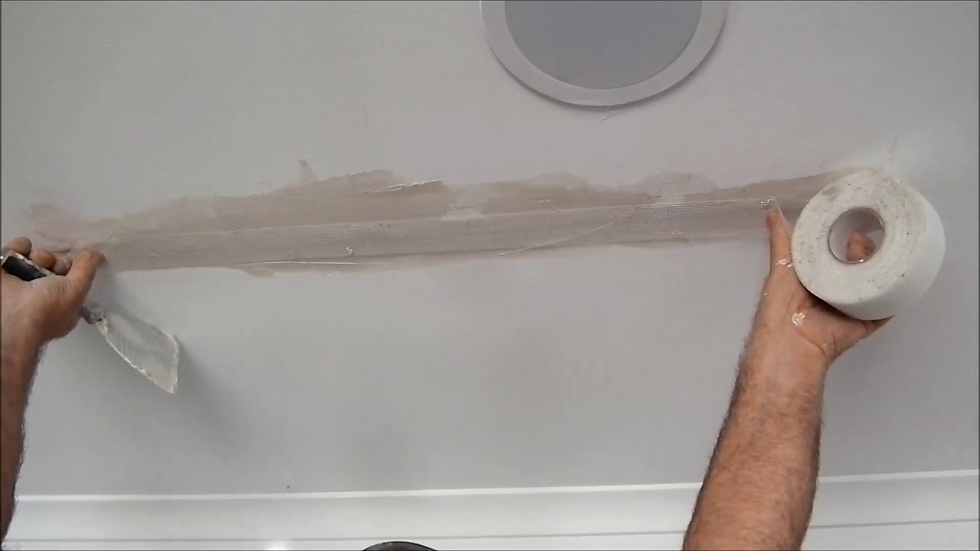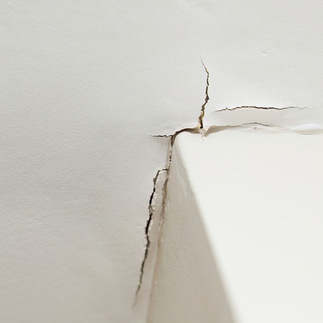How to Spot Cracks in Ceilings Before They Get Worse
- Na Bee-ha

- Aug 27
- 4 min read
Table of Contents

Introduction
Small cracks can lead to big problems—if you ignore them
Cracks in ceilings are common, especially in older homes or buildings exposed to heat and moisture. But how do you know which ones are serious? Early detection can save you time, money, and even structural damage. Knowing where to look—and what to look for—can protect your home and your wallet.

Why Ceiling Cracks Happen
Temperature changes – As temperatures rise and fall, your ceiling materials expand and contract, which can lead to stress and eventual cracking.
Poor plasterwork or paint – If the ceiling wasn't properly prepared or installed, cracks are likely to appear sooner.
Water damage – Roof leaks, plumbing issues, or bathroom moisture can seep into the ceiling, weakening its structure.
Structural movement – Houses settle over time. Small shifts in the foundation or walls can show up as cracks in your ceiling.
Types of Ceiling Cracks and What They Mean
Hairline cracks – Thin and shallow, usually due to paint or plaster settling. Typically cosmetic but worth monitoring.
Wide or jagged cracks – More serious and may suggest foundational problems or structural stress. These should be assessed by a professional.
Stained cracks – Discoloration with cracking often indicates a leak, which could mean mould or rot behind the surface.
Spiderweb cracks – Circular or web-like cracks might be harmless, but if they spread or deepen, they may point to bigger issues.
Signs a Crack Needs Immediate Attention
Crack is wider than 3mm – Larger cracks can suggest more than surface-level issues.
Appears suddenly or grows quickly – Rapid changes signal active structural problems or new leaks.
Comes with water stains or peeling paint – This is a red flag for hidden water damage.
Runs along ceiling and down walls – Could be a sign of shifting foundations.
Causes sagging or uneven ceiling areas – Suggests severe structural weakening and potential ceiling collapse.
Where to Check for Hidden Cracks
Corners where walls meet ceilings – Cracks often start at stress points like corners.
Around ceiling light fixtures and fans – Heat or vibrations from these fixtures can create small cracks.
Under bathroom ceilings or near air-conditioning units – Areas prone to moisture are high-risk zones.
On plasterboard joints and drywall seams – These are natural weak points in your ceiling construction.
Use a flashlight and inspect your ceiling from multiple angles to spot fine lines you might otherwise miss.

Tools and Tips for Early Detection
Flashlight – Shine across the surface to highlight fine cracks or uneven texture.
Measuring tape – Keep track of crack width over time to notice any changes.
Pencil test – Insert a pencil tip into the crack—if it fits easily, the crack may be deeper than you think.
Moisture meter – Use to detect hidden water damage, especially in stained or sagging areas.
Take photos periodically to monitor the progress of any cracks.
When to Call a Professional
If cracks appear after renovations or structural changes – They may have affected the stability of your home.
When cracks keep reappearing even after patching – This indicates an unresolved root issue.
When you suspect water leaks from above – Leaks can cause rot, mould, and ceiling collapse.
If ceiling feels soft, bouncy, or shows sagging – This could be a sign of advanced damage that requires urgent repair.

How Timely Repairs Can Save Money
Prevent small issues from escalating into full ceiling replacements – A quick fix today avoids a major repair tomorrow.
Avoid costly water damage restoration – Leaks can damage floors, furniture, and electrical systems.
Improve your home’s safety and market value – A sound ceiling reflects good maintenance.
Address leaks before they damage other parts of the house – Early detection helps stop the spread.
Did You Know?
Ceiling cracks can be early signs of termite infestations in wooden roof structures – Especially in older terrace or kampung homes.
Malaysia’s tropical humidity accelerates plaster deterioration – Making regular inspections more important.
Many new homeowners overlook ceiling issues during house purchases – Leading to unexpected repairs later.

Conclusion
Spotting ceiling cracks early can mean the difference between a quick patch and a major repair. Stay alert, inspect regularly, and don’t ignore warning signs. A well-maintained ceiling keeps your home safe, dry, and beautiful. Prevention always costs less than repair.
FAQs
1. Are all ceiling cracks dangerous?
No, many are harmless—but some point to deeper structural or water issues.
2. How often should I check my ceilings?
Check once every few months, and especially after heavy rain or renovations.
3. Can I fix ceiling cracks myself?
Hairline cracks, yes. Larger or recurring ones should be handled by professionals.
4. What causes cracks to suddenly appear?
Changes in humidity, structural movement, or new leaks can trigger sudden cracks.
5. Is ceiling inspection expensive?
Most inspections are affordable, and can save you thousands in repair costs later.
Get a Ceiling Inspection Today
🛠️ Noticed cracks or stains on your ceiling? Don’t wait for the damage to spread. Let our experts inspect and recommend the right fix.
📲 WhatsApp us now to book your inspection.
Peace of mind starts at the top—literally.











